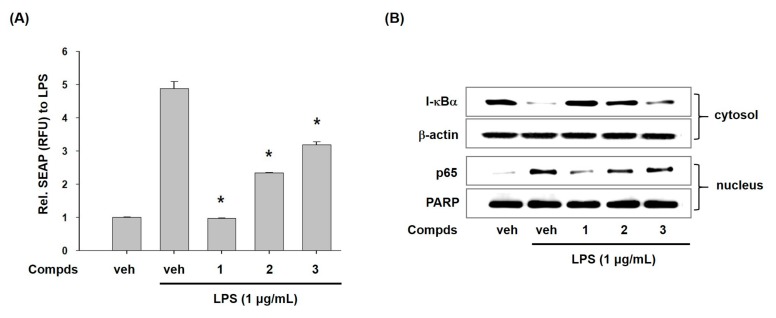Figure 3.
Effects of compounds 1–3 on LPS-induced NF-κB activation. (A) Effects of compounds 1–3 on LPS-induced nuclear factor-κB (NF-κB) transcriptional activation in T-RAW cells (the stably transfected RAW 264.7 cells with pNF-κB-SEAP-NPT. The pNF-κB-SEAP-NPT plasmid that permits expression of the secretory alkaline phosphatase (SEAP) reporter gene in response to the NF-κB activity and contains the neomycin phosphotransferase (NPT) gene for geneticin resistance.). T-RAW cells were treated with compounds 1–3 (10 μM) for 2 h prior to stimulation of LPS for 16 h. The transcriptional activity was assessed by measuring SEAP activity and then expressed as relative fluorescence unit (RFU). (B) Effects of compounds 1–3 on I-κB-α degradation and p65 translocation to nucleus in LPS-stimulated RAW 264.7 macrophages. Cells were pre-treated with compounds 1–3 (10 μM) for 30 min prior to LPS treatment for 20 min. Cytoplasmic and nuclear extracts were prepared for western blotting of I-κB-α and p65, respectively. β-Actin and poly ADP-ribose polymerase (PARP) were used as loading controls. Veh means vehicle. The values are presented as mean ± S.D. of three individual experiments. *p < 0.01 indicate significant differences from the LPS alone.

